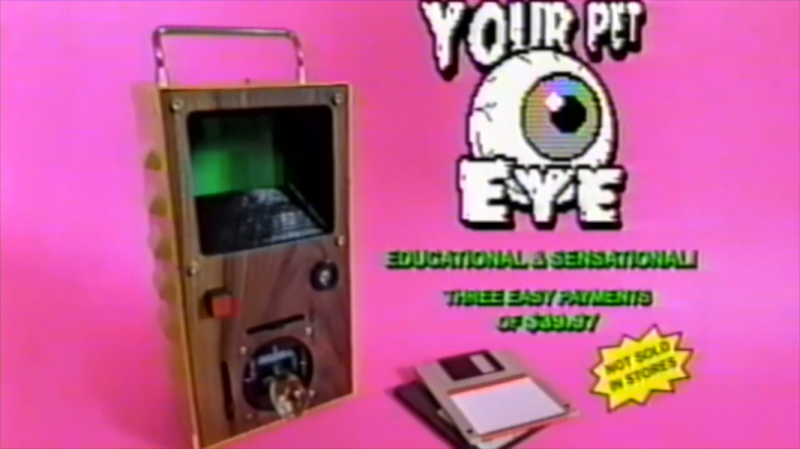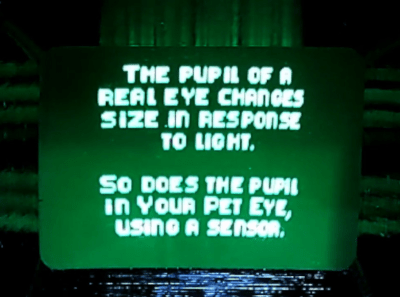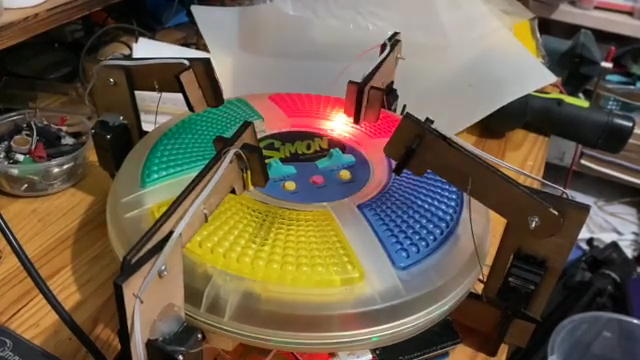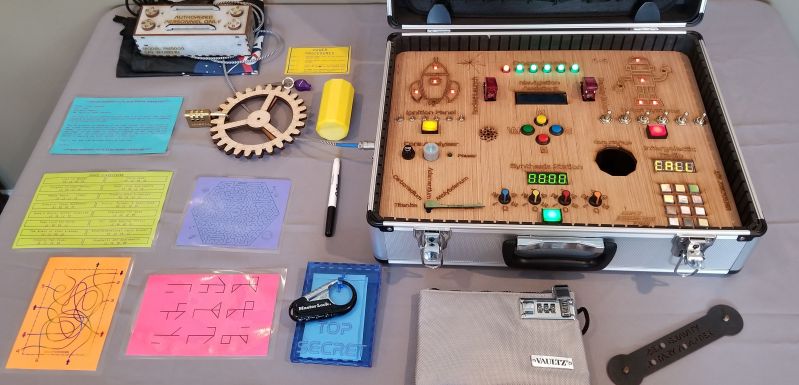Going Around in Circles With Homemade Arcade Classic Cyclone
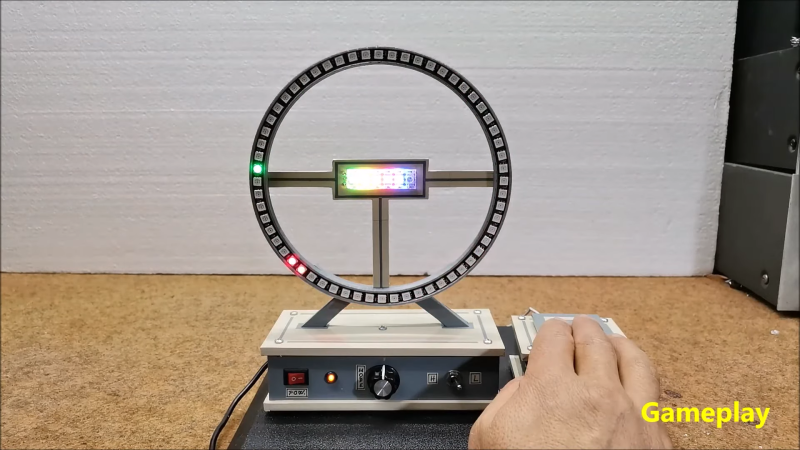
The classic arcade game Cyclone has attracted many players, along with their coins, thanks to its simple yet addictive gameplay. In its most basic form it consists of a light racing around a circular track, which the player then has to stop at exactly the right place. Arduino enthusiast [mircemk] made a home version of this game, which allows addicts to keep playing forever without running out of quarters.
Instead of an arcade cabinet, this smaller version has an upright 3D-printed ring that holds 60 WS2812 LEDs. A further six in the center of the ring act as a score counter. An Arduino in the base drives the LEDs and runs the game, which is based on an earlier iteration built by [oKeeg]. An interesting addition is a large homemade “arcade button”, which is large and sturdy enough to withstand any abuse inflicted on it by a frustrated player.
Retro-style sound effects and flashing light sequences give the game a bit of an arcade vibe, even without a big cabinet and piles of coins. Simple LED games like this are always great eye-catchers in any home or office; if you like this one, be sure to check out other LED games like the handheld LEDBOY, the one-dimensional dungeon crawler TWANG, and this LED racing game.


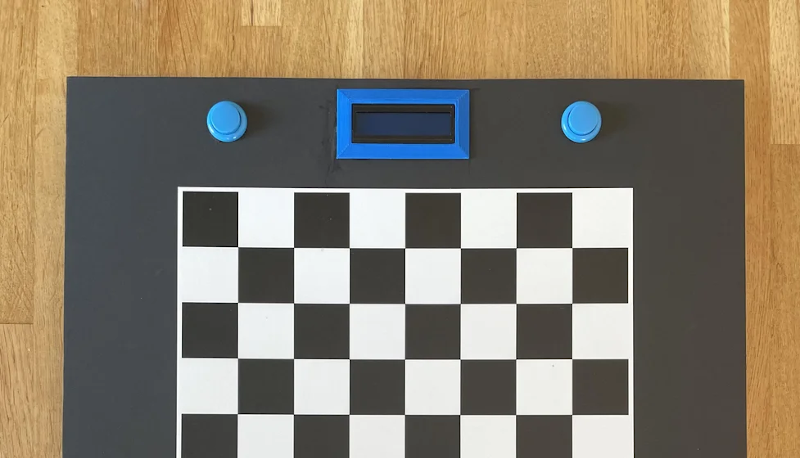

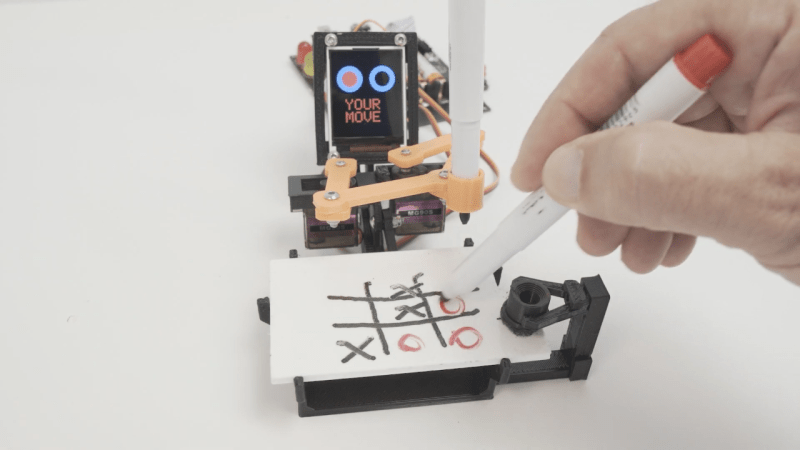
 The electronic components are an Arduino with an OLED screen and a buzzer, plus three servos to operate the mechanical parts. Lacking a 3D printer, [mircemk] cut the plastic parts from a 3 mm sheet of PVC, which seems to have worked surprisingly well. The game board consists of a small whiteboard on which the robot and the human can draw their O’s and X’s.
The electronic components are an Arduino with an OLED screen and a buzzer, plus three servos to operate the mechanical parts. Lacking a 3D printer, [mircemk] cut the plastic parts from a 3 mm sheet of PVC, which seems to have worked surprisingly well. The game board consists of a small whiteboard on which the robot and the human can draw their O’s and X’s.